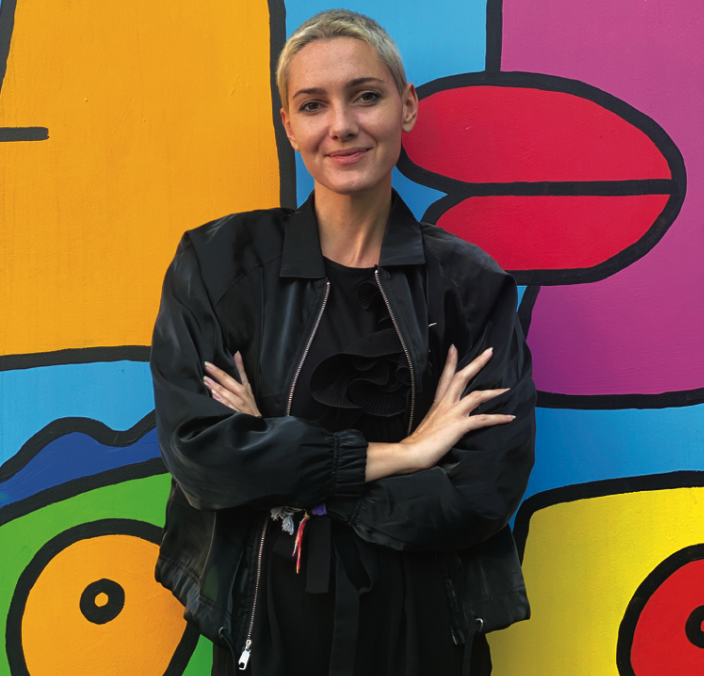
“It is not the strongest of the species that survives, nor the most intelligent; it is the one most adaptable to change.” I’m very attached to this quote from Charles Darwin. Although written by the English naturalist, best known for his contributions to the science of evolution in the 19th century, I still find it incredibly accurate and probably more relevant than ever.
How can advertising tell the story of this era?
Should it tell it as is, or should it pretend to live in another dimension, where no virus is rampant? Should brands be at the service of the common good? Should they carry values or try to maintain their figures… business as usual? How should we, as advertisers, navigate and find balance? How can we guide when we don’t know the course? I am one of those who think that before finding the right answers, we must first ask ourselves the right questions.
As agencies, what are we going to do about change when it comes to our clients? Also, what are we going to do with them for a change?
Change as the only option
Because these times are complex enough for us to undergo change, agencies must be among those who adapt best to it. This is what makes this ‘long-term transition’ exciting for the advertising industry. The challenge now is twofold: we must persist in the face of urgency and change in a changing world.
I think a city like Dubai is the perfect embodiment of “Change as the only constant in life” – a city born out of change, in perpetual evolution. All that we are going through now must be for the better. Just imagine for a few seconds a world without change. Maybe we would paint our advertising campaigns in caves. I’m joking, but it’s true that the human being tends to be initially resistant to change. There are a short-term anxiety and immobility that can sometimes become paralyzing and it is this type of resistance that we are in the process of overcoming.
I obviously don’t agree with all of Henry Ford’s ideas but I can say that he trusted his instincts and carried out his wishes towards innovation. This is what he said about the Ford T: “If I had asked consumers what they wanted; they would have said faster horses.” This shows how tempting it is to keep our old habits.
I feel that this last year has been a time when agencies have gone beyond their comfort zones and moved more into the business solutions, innovations, partnerships with influencers and so on, rather than just being limited to marketing. Furthermore, in a time when the positioning of the general interest at the heart of corporate strategies was still a subject of controversy, the health and economic crisis has given rise to a very clear line of force in favor of models that are more empathetic, more transparent, and more engaging for the consumers.
A common responsibility
I am going to quote William Bernbach here, not just because he is the founder DDB, the company in which I work as Head of Strategic Planning, but mainly because he is, in my opinion, the person who said the most essential things about the advertising industry: “All of us who professionally use the mass media are the shapers of society. We can vulgarize that society. We can brutalize it. Or we can help lift it onto a higher level.”
It is true that as advertisers, we participate with our clients in creating culture. We are an integral part of this shared culture. Being part of the shapers of this common culture gives us a great power but, above all, a great responsibility. Where consumers see their relationship with the world turned upside down, where everything is reinvented – the relationship to oneself, to others, to time, to home – the relationship to brands is also changing. It is no longer a question of saying things, but also of taking action. Brands must walk the talk and get on the front line.
This crisis has revealed to the world the power of great brands which, by showing solidarity and empathy, have opened up new ways to nourish the brand’s image, generate proximity and preference. Take Decathlon, for instance. It has turned scuba gear into ventilators for coronavirus patients to help fight the pandemic. The company has used forward-thinking to do its part as an effort to fight against the virus. Another great example would be LVMH, the multinational corporation and conglomerate specializing in luxury goods, which has deployed its perfume factories to manufacture hand sanitizer. Unilever’s global food brand has created new learning modules for chefs around the world. Heineken has decided to support restaurants and bars throughout this crisis, with the “Back the Bars” initiative. Taking concrete actions with compassion for the common good is not the only axis, but it is clearly an essential one for 2021 and beyond.
A demand from consumers
On the consumer’s side, we have tangible evidence that people will demand brands to not only act in their favor, but also take responsibility and contribute to the big societal issues. Several regional studies from McKinsey, PWC, Arabometer, clearly indicate that people are becoming much more aware when buying a brand. They want to know about the quality of the product; they are interested in healthy packaging. They want to know if the company is treating its employees well, if the brand is doing something good on their behalf.
It’s even truer when it comes to millennials who account for about 60% of the population in the Middle East. The region is among the youngest in the world with half its population under the age of 25! This is a huge business opportunity if brands succeed in understanding them. Research done by the Sustainability Advisory Group in the MENA region shows that Arab youth hold the potential to make a considerable contribution to the development of the region. This growing consciousness will shape the discourse of environmental issues in the coming years. These ethically-aware and increasingly vocal people are definitely impacting the way brands will communicate and even start to change products and services, and this is only the beginning. For this region, the potential for change is massive; that’s why understanding deeply the ones leading the change represents a huge opportunity.
Fighting the good fight
Each brand needs to make sure to have a clear purpose with a long-term vision, to know what it’s fighting for and what it’s fighting against. The purpose not only deepens the bond by establishing an emotional connection and momentum, hence increasing trust and perceived value, but also works as a true north for the brand and motivates employees. Don’t get me wrong, we will not always create campaigns about the brand’s purpose. Even in this pandemic I do believe advertising can still be light, fun, or even poetic. Sometimes, just making people smile is a good KPI.
The important thing is to strike a balance between long-term and short-term campaigns. To talk about efficiency, the current mistake would be to act only based on the short term when it is necessary to invest and build on the long run. Brands have to last. They have to say why they are fighting, to dig a furrow and be certain that they represent something honest in people’s minds. They need to know why they exist in this world and what their role is regarding the society. The Golden Circle is a simple and useful tool I like to use with our clients to help them define their “why.” It is a concept developed by Simon Sinek who says, “People don’t buy what you do, they buy why you do it.” According to Sinek, most people communicate by starting with the “what they do” aspect and eventually work their way back to talk about “how” and “why” they do what they do.
I also do believe that one of our duty is to empower women, in our industry and beyond. No investment is more crucial for our region than supporting women throughout their careers and driving gender diversity within the workforce. We must embrace the change by recruiting more women at the top of agencies. We must ensure that we represent women equally in our communications and that we look at women’s roles with a fresh perspective. I want more advertising with men doing the housework. This is also part of our job.
We can create transformative campaigns for our brands and the people who consume them. Disruptive ideas are not only building distinctiveness for our client; they also have the power to change the world.
This article was published in Communicate’s Q1 edition. You can access the full magazine here.





